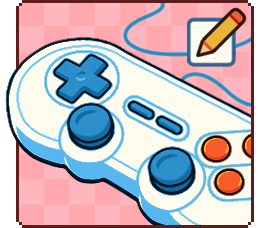Specializations
Welcome back! If you’re reading this and wondering where you’ve ended up – and why I’m saying “welcome back” – then I can only assume you’ve arrived here by way of some accidental keyboard flailing. No worries, happens to the best of us.
Previously, we were looking at visual artist roles in the games industry and comparing them to RPG classes, because of course we were. There’s a videogame analogy for everything. Especially when talking about videogames themselves.
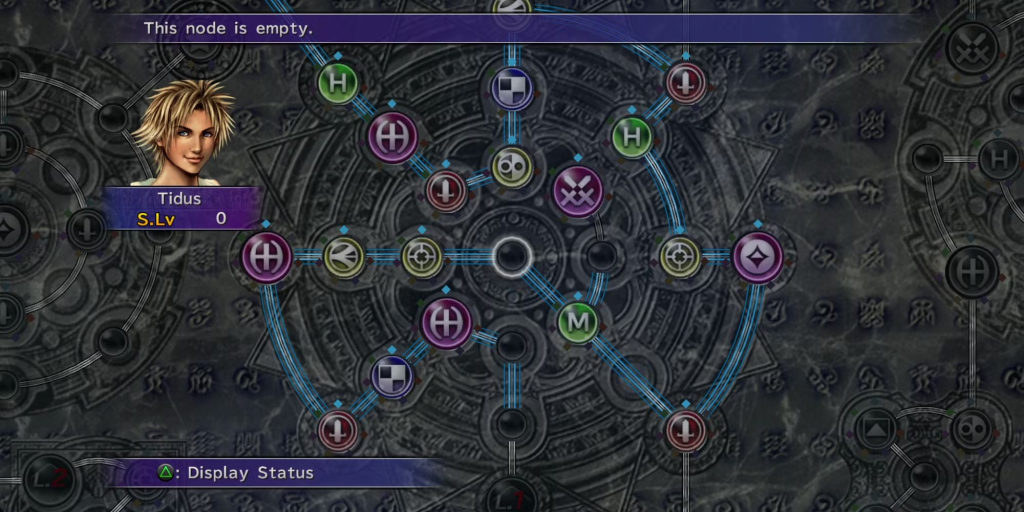
Final Fantasy X / Square-Enix
Last time, we covered the “main classes” – Concept Artist, 2D Artist, and 3D Artist.
In this article, we’ll be looking into Specializations. You’ve chosen your starting class, put some XP into it, unlocked a few ability points, and now you’re staring down your creative skill tree. Maybe it’s a neat and tidy grid, like Avowed’s upgrade paths. Or maybe it’s an overwhelming labyrinth of possibilities, like the sprawling Sphere Grid from Final Fantasy X. Either way, it’s time to decide where to start allocating your hard-earned Skill Points.
And unlike some RPGs, you’re not locked into one specialization. You can always redistribute your points – no need for a gold fee or a respec potion (or even a larval tear). Trying different roles – whether on the job or in your own time – isn’t just acceptable; it’s smart. The more you dabble, the more transferable skills you learn, though for the sake of our RPG analogy, let’s call them “passive abilities.” Plus, some advanced roles we’ll talk about next time require a bit of cross-specialization, so getting a taste of everything can only make you stronger.
So, let’s take a look at the different paths ahead. As we go through them, keep this in mind:
- Concept Artists design cool things.
- 2D Artists draw cool things.
- 3D Artists build cool things.
But what kind of cool things are we talking about, exactly?

Star Wars: Jedi Survivor / Respawn Entertainment
Skill Path: Environmental Art
Every game world you’ve ever explored – be it the expansive fields of Hyrule, the grimy underbelly of Night City, or the many health and safety infringements of the USG Ishimura – exists thanks to Environmental Artists.
Before anyone starts modeling props or painting textures, the world needs a vision, and that’s where Concept Artists come in. They sketch out the key locations, mood pieces, and architectural designs that set the tone. Is this a crumbling gothic ruin or a pristine utopian city? Do the buildings loom ominously or welcome visitors with warm candlelight? Will this corridor be a normal corridor or, as fate often dictates, a monster ambush corridor™? Their work serves as the guiding blueprint for the 3D and 2D artists who later wrestle it into existence.

Bioshock Infinite Concept Art / Ben Lo
3D artists construct buildings, terrain, and key landmarks, while 2D artists handle textures, decals, and sometimes entire painted backdrops. Environmental Art is a collaborative effort – these artists work closely with Level Designers (or World Designers, if the studio insists on sounding fancier) to ensure the world isn’t just a feast for the eyes but also functional. After all, it’s no good making a breathtaking underground ruin if the player gets stuck on a rock and has to awkwardly wiggle-jump to freedom.
Environmental artists also deal with tilesets – modular pieces that can be reused and arranged to create large areas efficiently. Think of them as Lego bricks, but instead of snapping together to make a fire station or overly expensive Millenium Falcon, they form dungeon corridors, entire cities, and the same pub interior that appears in every RPG.
Prerequisites: A keen eye for composition, mood, and storytelling through spaces. A love of architectural details, lighting, and materials – yes, even the really boring ones like “Raked Concrete 03.” A willingness to accept that, no matter how much effort you put into making a lovingly detailed medieval tavern, 90% of players will sprint through it without looking up at your exquisitely designed wooden rafters.

Silent Hill 2 / Bloober Team
Passive Skills
Spatial Awareness Buff: You start noticing weird tiling patterns and UV mapping errors in real life. That brick wall? Repeating texture. Those wallpaper strips aren’t even aligned properly. The illusion is shattered.
Weather Wizardry: You instinctively know how to make rain-drenched alleyways look moody, deserts feel scorching, and fog hide just the right amount of lurking horror, as all good fog should.
Optimisation Instincts: Balancing visual detail and performance is second nature. After all, a stunningly detailed city that runs at 10 FPS is really just a beautifully rendered slideshow.
Skill Path: Character Artist
Every character you’ve ever met in a game – the ones you love, the ones you hate, and the ones you secretly have a crush on (we’ve all done it) – exists thanks to Character Artists. They take the basic idea of a character and bring them to life visually, making sure they not only fit into the world but also tell a story through their design.
Before modeling or painting begins, a character’s personality must be established, and that’s where Concept Artists step in. They explore early designs, focusing on how the character’s appearance, posture, and expressions reflect their role. Is this character a stoic warrior, a cheerful inventor, or an enigmatic traveler? Every detail, from body shape to facial features and stance, helps communicate their story before the finer details are added. After all, a battle-hardened mercenary with a big smile and a bowtie might be confusing to the player (unless you’re making a very different kind of game).

Hi-Fi Rush Chai Character Sheet / Tango Gameworks
Once the concept is locked down, it’s time for the 3D and 2D artists to work their magic. 3D artists step in to sculpt the character’s body, clothes, and accessories, ensuring that every buckle, crease, and battle scar aligns with the vision. Meanwhile, 2D artists add the finishing touches, painting textures, perfecting facial expressions, and creating portraits that can’t help but pop off the screen. Character Art is a team sport – these artists collaborate closely with animators to make sure the character not only looks great but also moves in a way that matches their personality. After all, nobody wants to see Master Chief skipping around like a cheerful toddler. Or do they? No. No, they don’t.
Character artists also work with silhouettes – shapes that make the character recognizable from a distance. A well-designed silhouette is essential because it allows players to immediately identify who’s who, even in the midst of chaotic combat or exploration. Ever wondered why hero shooters like Overwatch have such a wildly diverse cast? Now you know.
Prerequisites: A knack for storytelling through visual details. A sharp eye for shape, silhouette, and proportion – because sometimes less is more (unless you’re designing a muscle-bound barbarian, in which case, more is more). A love of character traits and quirks – your character’s backstory should live in their design.
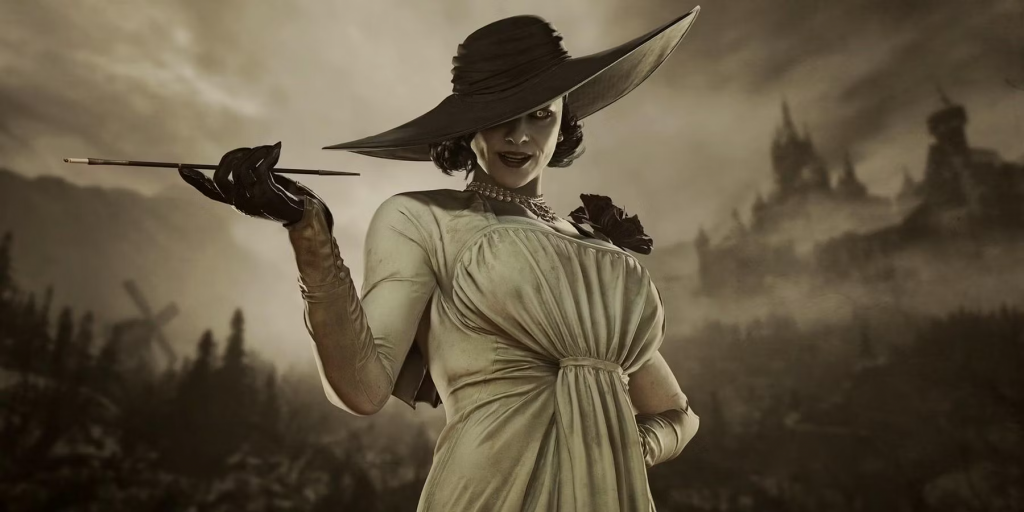
Resident Evil Village / Capcom
Passive Skills
Silhouette Sense: You start recognizing the importance of silhouettes in everyday life. “That’s a great silhouette!” you’ll think, even when looking at a random stranger on the street.
Mood Ring Master: You can tell exactly what a character is thinking from their eyebrows alone. Overthinking something? Eyebrows raised. Feeling smug? Eyebrows subtly arched. The power of eyebrows is real.
Costume Detective: You start obsessively analyzing every character’s outfit. Are those boots actually made for running? Does that armor allow for proper joint movement, or is the wearer doomed to waddle around like a wind-up toy soldier? Congratulations – you’ve become the Sherlock Holmes of fashion.
Skill Path: UI Artist
UI Artists are the architects of the digital interfaces you navigate daily in games – the menus, the HUDs, the maps, and everything in between. They design the systems that allow you to interact with the game world seamlessly, without overwhelming you or leaving you frustrated. After all, nobody wants to accidentally delete their save file when they meant to open the inventory.
Every pop-up, button, and icon is part of their design, working to make the player’s experience smooth, intuitive, and visually appealing – so that, when you’re mid-battle, the only thing you’re fighting is the enemy, not a poorly placed menu.
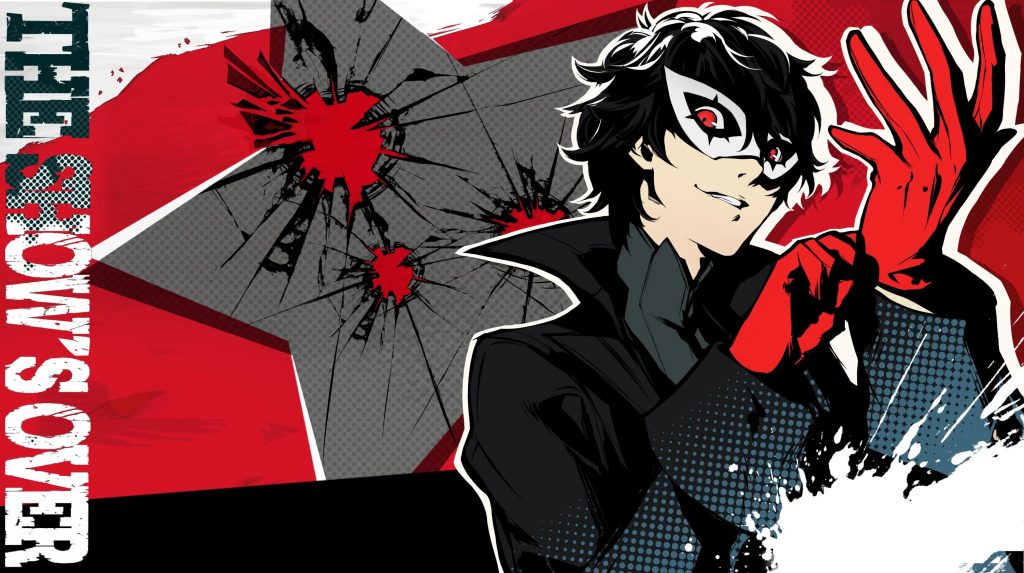
Persona 5 / Atlus
Another key part of UI design is knowing when to dial it back and when to go all-out. Some games need minimal, almost invisible UI to maintain immersion, like Silent Hill 2, where the sparse interface helps to keep you fully immersed as you glance nervously around corners. On the other hand, games like Persona 5 embrace a loud, flashy UI that’s almost as much a character as the protagonists themselves. Knowing when to let the UI fade into the background and when to make it a part of the action is a critical skill for any UI artist.
But it’s not just about how the UI looks or how it functions, it’s also about consistency and cohesion. The interface should feel like a natural extension of the game world. A space-faring RPG needs a UI that feels futuristic and clean, while a medieval fantasy adventure might use a more rustic, textured approach. Even in abstract games where the UI might seem intentionally minimalist, every button and slider has to feel like it belongs to that world. UI artists need to ensure that their designs fit seamlessly with the game’s visual language, creating a harmonious experience from the moment you boot up to the final level. After all, the “Press X to Pay Respects” meme became a thing for a reason.
Prerequisites: A passion for graphic design, because you need to make things that are both functionally pretty and pretty functional. A sharp eye for composition, color theory, and typography, because knowing your kerning from your tracking is essential when you’re designing the perfect UI. You’ll need to have a knack for balancing style with usability, because at the end of the day, nobody’s going to care how sleek your menu looks if it’s impossible to navigate.
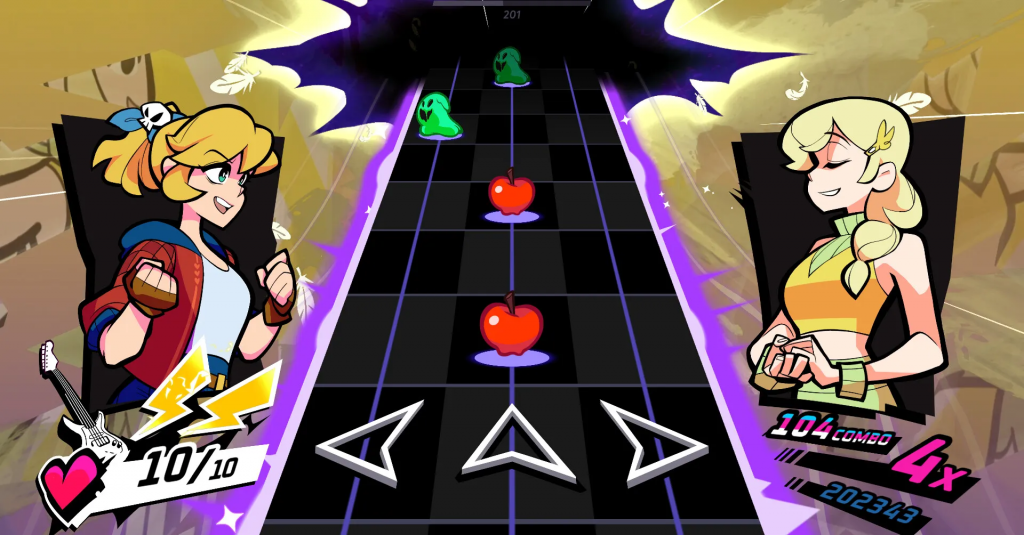
Rift of the Necrodancer / Brace Yourself Games
Passive Skills
Pixel Perfectionist: You start spotting tiny design flaws everywhere. “That button is 2 pixels too large!” you’ll mutter under your breath, as you re-evaluate every UI you come across for the rest of your life.
Color Whisperer: You’re the human equivalent of a Pantone book. You know the exact hue for every mood. That “vibrant teal” everyone likes? You can tell them it’s actually #009688 and they’ll think you’re a wizard.
Typeface Tactician: You can spot an illegible font a mile away. Nothing annoys you more than a mismatch between serif and sans serif, except maybe Comic Sans. If you see it, you’re already drafting a polite email in your head about better choices.
Skill Path: Prop Artist
Props are important. Sure, you might be sitting there going, “It’s just a table.” And sure, that table might seem like it’s just there for aesthetic purposes. But ask yourself: does it make the world feel lived-in? Does it suggest the presence of a character? Good props don’t just sit there looking pretty; they help tell the story. A cracked mirror in an abandoned building speaks of decay and neglect, while a spotless, well-maintained one raises a different question entirely – who’s been diligently dusting this haunted house? Did the cleaning service not get the memo about the horrible murders?
And don’t forget the all-important rule of “Does it make sense for the world?” Imagine you’re making a futuristic shooter; an ancient-looking wooden crate might feel out of place in a high-tech environment. But that same crate would probably look right at home in an old-world fantasy dungeon. You need to understand the setting inside and out because, much like a poorly placed prop in a level, a poorly placed idea will also break immersion.
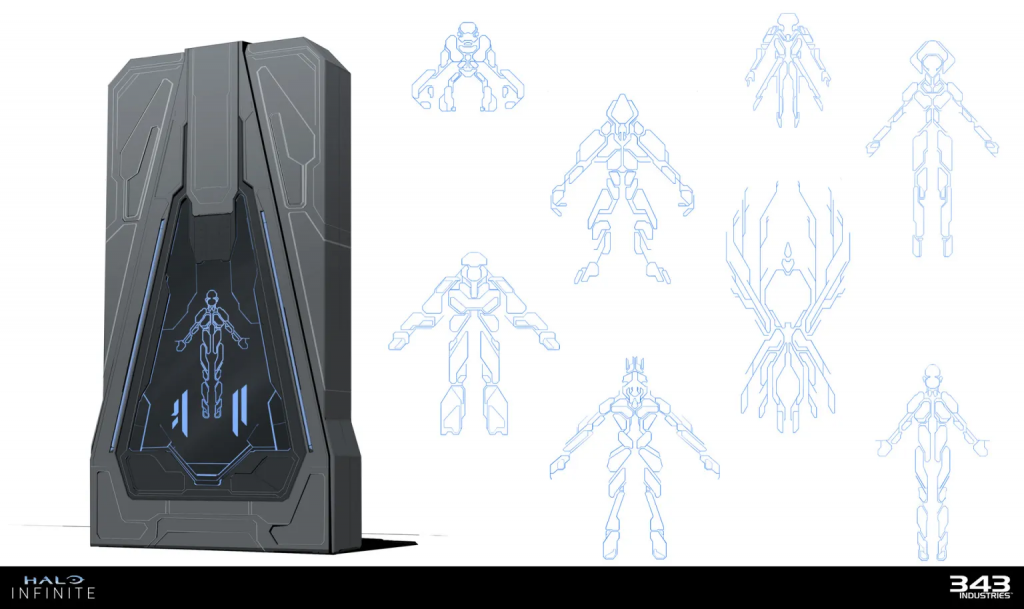
Halo Infinite DNA Slab Concept / Molly McLaughlin
Realism is your best friend and worst enemy here. You might craft a fantastically detailed lantern, but if it’s not actively signpost the way forward or is otherwise non-interactive (i.e., if the player can’t pick it up, light it, or throw it), it might as well just be a JPEG hanging on a wall. For props to be effective, if they’re not integral to environmental storytelling, they need to enhance the game’s experience. Take a chair – looks like a chair, but does it work? Can the player sit in it? Can they hurl it at enemies during a particularly tense shootout? And if not, well… what’s the point?
Textures and materials are the spice of prop design. Think of them as the visual language that tells the player, “Here’s where you should focus” or “Here’s something that’s been through a lot.” A rusted chain links a different narrative than a polished one, just as a cracked ceramic vase conveys something far different than a new, pristine one. Textures help the player understand the world’s story at a glance – whether it’s a weapon with the faint glow of futuristic tech or an old lantern with frayed, weathered rope. In prop design, the material is as much about storytelling as it is about aesthetics. Nobody’s ever going to believe that Sword of Prophecy was forged in a lava pit if it looks like it’s made of plastic and glitter.
Prerequisites: A solid grasp of 3D modeling, texturing, and the ability to make even a chair feel like it has a backstory. Props might not get as much glory as characters or environments, but they’re vital for bringing the world to life. Swords can convey as much personality as the character that wields them. The key to good props is functionality and beauty, and knowing which prop needs which – because nobody’s got time for props that look great but can’t be interacted with (looking at you, mysterious Mario Sunshine book). Oh, and optimization – the thing about props is that there tends to be a lot of them, so 3D artists will need to be mercenary when it comes to polygon counts!

Cyberpunk 2077 Borg Battle Rifle / Kris Thaler
Passive Skills
Chair Whisperer: You can tell just by looking at a chair whether it’s perfect for lounging, sitting in during a tense strategy session, or if it’s just the right one for the Final Boss to dramatically deliver their pre-fight monologue. Bonus points if it’s also thrown across the room in a fit of villainous rage.
Era-Eye: You’ve honed your ability to spot anachronisms so well, it’s almost a superpower. Every time you watch a film or TV show, you can’t help but loudly groan and point out, “That actor just pulled out an iPhone 4, but this takes place in 2008!” or “That medieval knight just picked up a Starbucks cup – in the middle of a siege!“
Practical Wizardry: You’ve become an expert at crafting props that look amazing and function properly in the game world. You know the exact weight of an axe based on how heavy it looks, and every little scrap of material and texture is chosen with gameplay in mind.
Checkpoint
That’s it for now! Whether you’ve decided to level up as an Environmental Artist, mastering your craft as a Character Artist, fine-tuning interfaces as a UI Artist, or proving that even a humble bucket can tell a story as a Prop Artist, you’re well on your way to figuring out your craft.
But why stop here? In Part 3, we’ll be looking at “Advanced Classes,” because what’s the point of a skill tree if you don’t get to unlock some ridiculously overpowered abilities at the end? See you then!






